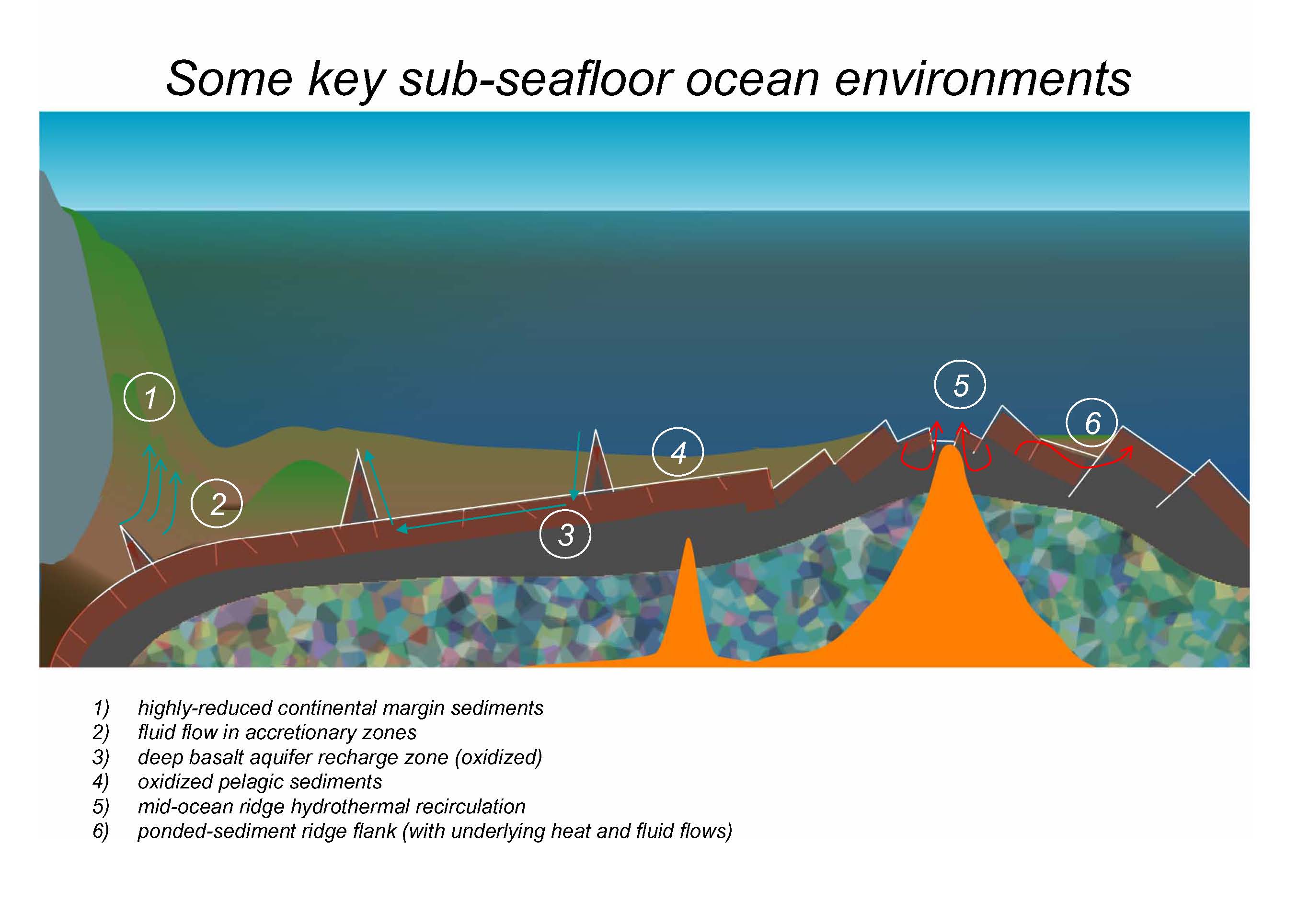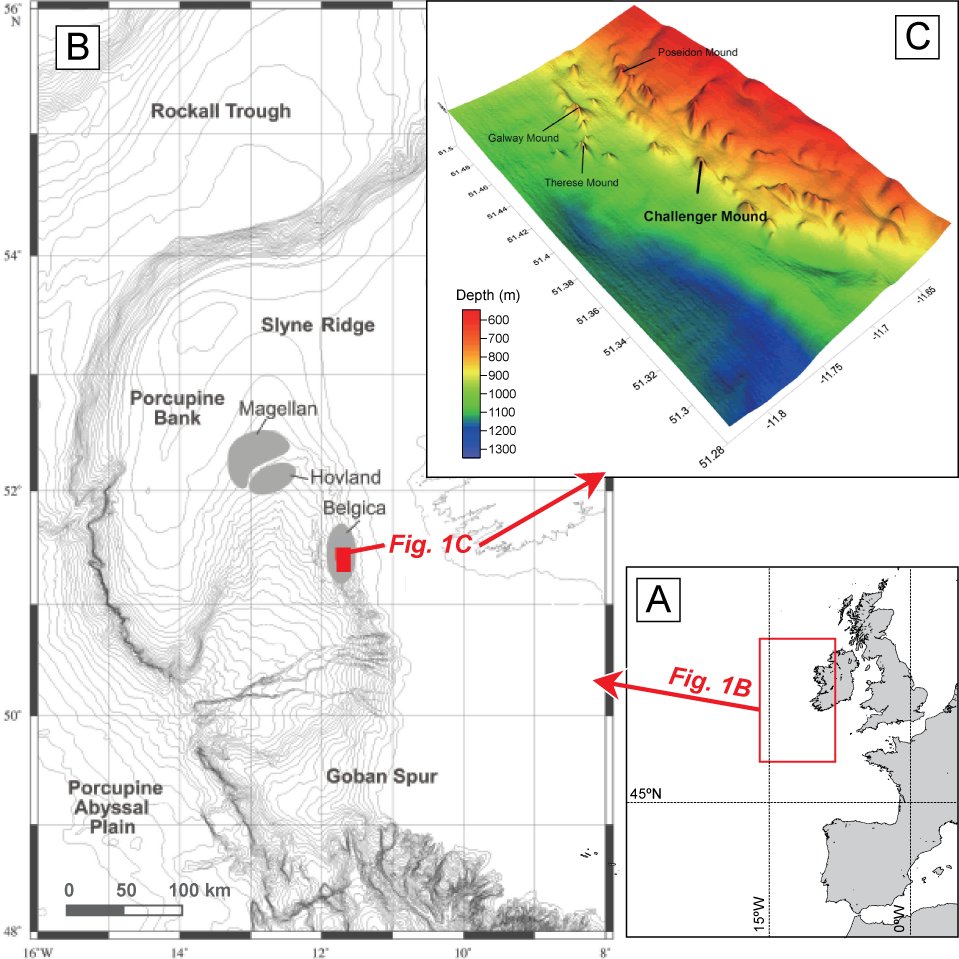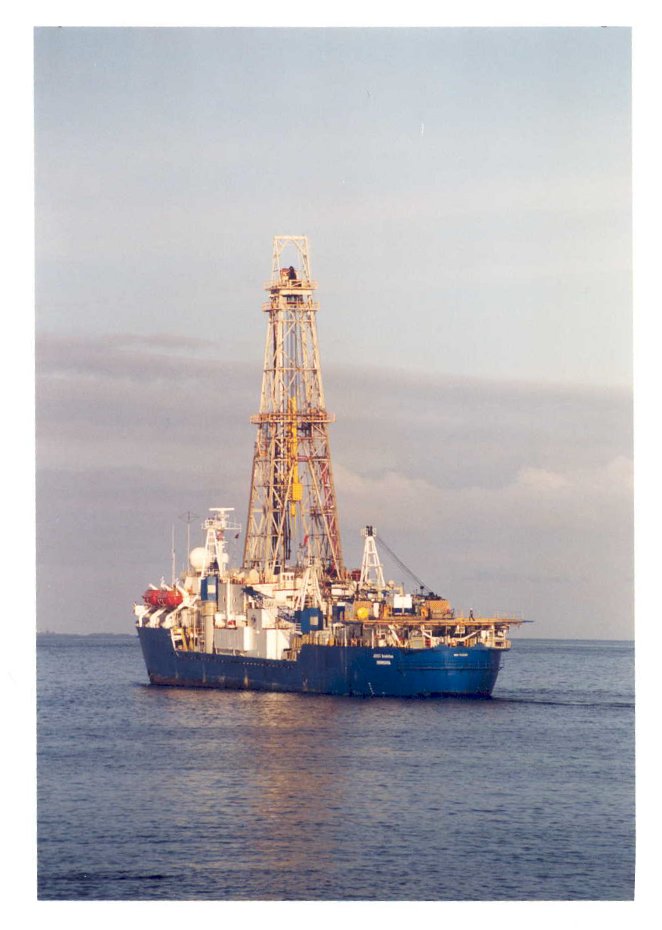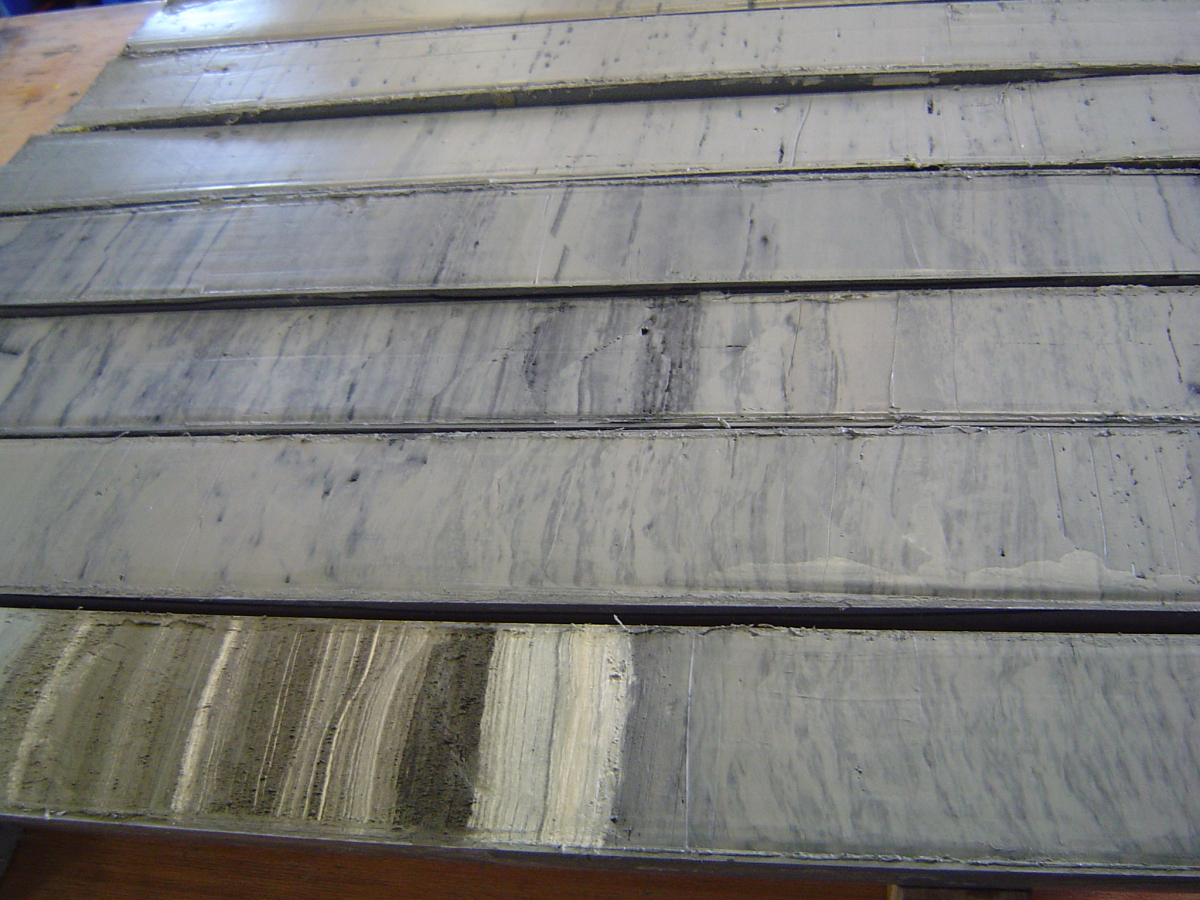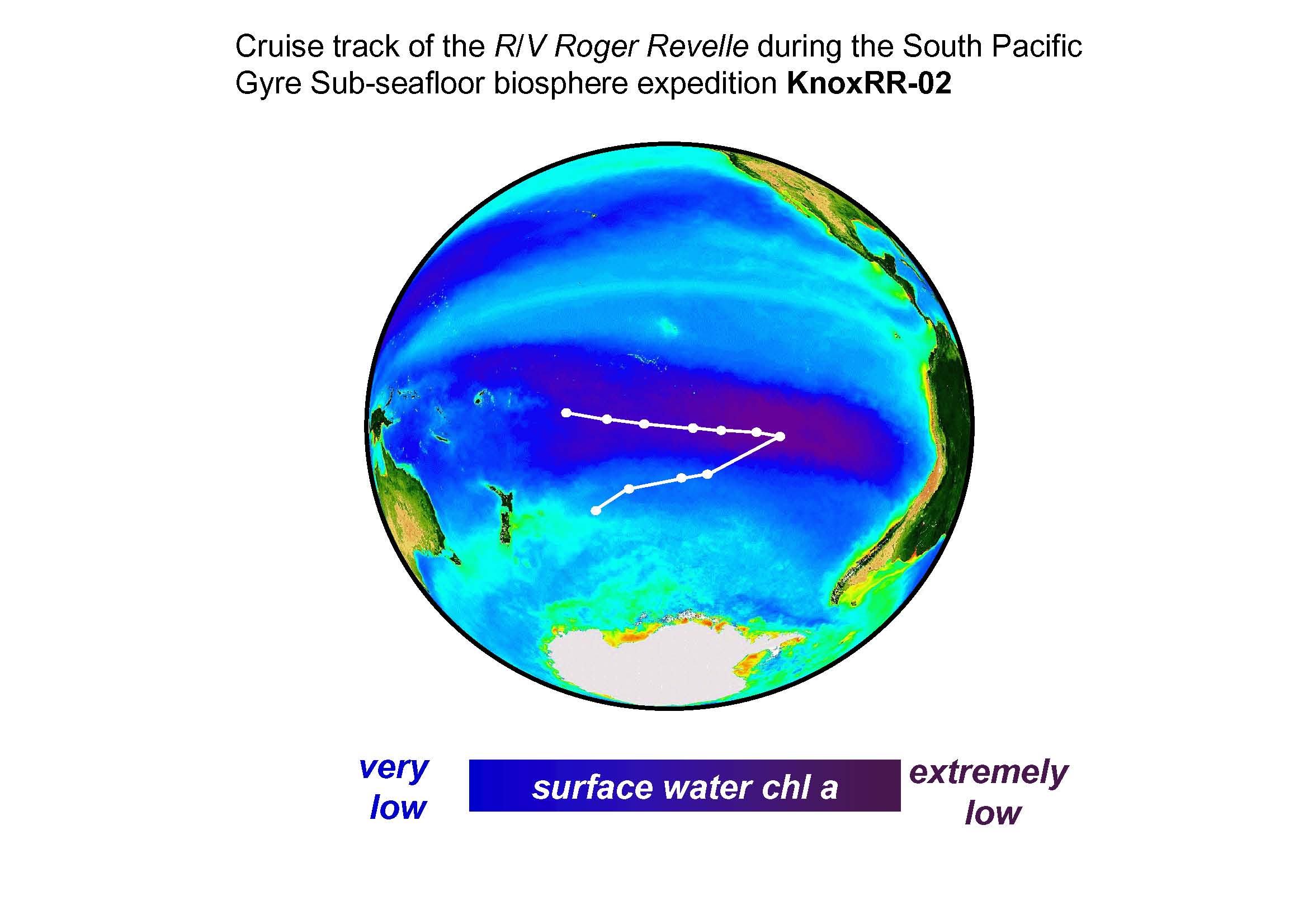Page path:
- Departments
- Department of Biogeochemistry
- Deep Sub-seafloor Biogeochemistry-The Deep Biosphere
Deep Sub-seafloor Biogeochemistry-The Deep Biosphere
Sub-seafloor sediments comprise one of the largest habitats on Earth. Principal challenges include assessing the metabolic activities and processes occurring in these environments and quatifying their impact on the chemistry in the sub-seafloor ocean. Sub-seafloor life studies at the MPI continue to be closely associated with international and national programs, e.g., Integrated Ocean Drilling Program (IODP) and the MARUM DFG Research Center, Bremen.
Most samples have been obtained through scientific drilling onboard the scientific drilling vessel JOIDES Resolution.
In September 2006 a workshop on "Exploring Subseafloor Life with the Integrated Ocean Drilling Program" was held in Vancouver, Canada. The report on that workshop can be read in the September 2007 Issue of Scientific Drilling.
Most samples have been obtained through scientific drilling onboard the scientific drilling vessel JOIDES Resolution.
In September 2006 a workshop on "Exploring Subseafloor Life with the Integrated Ocean Drilling Program" was held in Vancouver, Canada. The report on that workshop can be read in the September 2007 Issue of Scientific Drilling.
ODP Leg 201 Peru Deep Biosphere
In 2002, we participated in the first ODP Leg dedicated to exploring the Deep Biosphere – ODP Leg 201 Peru Biosphere. On ODP Leg 201, B.B. Joergensen was co-chief scientist along with S. D'Hondt and T. Ferdelman sailed as a shipboard microbiologist. We were responsible or involved in determination of sulfate reduction rate activities (Parkes et al., 2005), sulfur chemistry (D’Hondt et al., 2004), and quantification of prokaryotic biomass and its relationship to activity (Schippers et al., 2005).
IODP Expedition 307 Porcupine Carbonate Mounds
In June 2005 we participated in IODP Expedition 307 Porcupine Basin Carbonate Mounds. Geophysical surveys have revealed that upward of a thousand deep-water coral mounds lie completely or partially buried in the siliclastic sediments along the slope of the Porcupine Seabight at water depths between about 600 and 900 mbsl. The mounds rest on erosional surfaces observed in high-resolution seismic profiles, and form conical bodies reaching the width over several km and the height over 100 to 200 meters height, covered with living and/or dead cold-water corals. Of great interest is the role of microbial communities in carbonate formation and dissolution processes within the mound sediments. IODP Expedition 307 drilled the Challenger Mound in the Porcupine Seabight (SW Ireland continental margin) with the goal of unveiling the origin and depositional processes of one of these intriguing sedimentary structures. See the Scientific Drilling (Feb 06) article for more information.
Importantly, in deep continental margin sediments, iron reduction linked to bacterial sulfate reduction may ultimately influence mineral-controlled diagenesis of carbonate in the cold-water coral bearing sediments at IODP Site 1317 and post-glacial sediments off the coast of Norway. This is being studied in the ESF Microsystems Project as a PhD project (L. Wehrmann)
IODP Expedition 316 Nankai Shallow Megasplay & Thrust Faults
N. Riedinger also just returned from Expdition 316 onboard the Japanes Drilling Vessel Chikyu, where the Nanka Accretionary Prism is being drilled and investigated as part of the IODP NanTroSEIZE project. Natascha participated as the shipboard organic geochemist and we will be examining the iron and methane biogeochemistry of these fluid-impacted sediments.
In 2002, we participated in the first ODP Leg dedicated to exploring the Deep Biosphere – ODP Leg 201 Peru Biosphere. On ODP Leg 201, B.B. Joergensen was co-chief scientist along with S. D'Hondt and T. Ferdelman sailed as a shipboard microbiologist. We were responsible or involved in determination of sulfate reduction rate activities (Parkes et al., 2005), sulfur chemistry (D’Hondt et al., 2004), and quantification of prokaryotic biomass and its relationship to activity (Schippers et al., 2005).
IODP Expedition 307 Porcupine Carbonate Mounds
In June 2005 we participated in IODP Expedition 307 Porcupine Basin Carbonate Mounds. Geophysical surveys have revealed that upward of a thousand deep-water coral mounds lie completely or partially buried in the siliclastic sediments along the slope of the Porcupine Seabight at water depths between about 600 and 900 mbsl. The mounds rest on erosional surfaces observed in high-resolution seismic profiles, and form conical bodies reaching the width over several km and the height over 100 to 200 meters height, covered with living and/or dead cold-water corals. Of great interest is the role of microbial communities in carbonate formation and dissolution processes within the mound sediments. IODP Expedition 307 drilled the Challenger Mound in the Porcupine Seabight (SW Ireland continental margin) with the goal of unveiling the origin and depositional processes of one of these intriguing sedimentary structures. See the Scientific Drilling (Feb 06) article for more information.
Importantly, in deep continental margin sediments, iron reduction linked to bacterial sulfate reduction may ultimately influence mineral-controlled diagenesis of carbonate in the cold-water coral bearing sediments at IODP Site 1317 and post-glacial sediments off the coast of Norway. This is being studied in the ESF Microsystems Project as a PhD project (L. Wehrmann)
IODP Expedition 316 Nankai Shallow Megasplay & Thrust Faults
N. Riedinger also just returned from Expdition 316 onboard the Japanes Drilling Vessel Chikyu, where the Nanka Accretionary Prism is being drilled and investigated as part of the IODP NanTroSEIZE project. Natascha participated as the shipboard organic geochemist and we will be examining the iron and methane biogeochemistry of these fluid-impacted sediments.
Iron and Sulfur Coupling
Through a combination of potential sulfate-reduction rate measurements, pore water chemistry, and dissimilatory sulfite reductase gene(dsrAB) analysis, we have documented a cryptic sulfur cycle occurring below the sulfate-methane transition zone. Pore water and solid phase data from the Black Sea and the Baltic Sea indicates that oxidation of reduced sulfur species with iron-bearing minerals occurs at these depths. The data include the first-ever pore water distributions of zero-valent sulfur, including polysulfide speciation, obtained for a deep sedimentary sequence. Sub-surface biogeochemistry also has implications for the storage of CO2 in deep geological rock formations. As part of an EU Marie Curie research training network (EU-GRASP), we focus on how CO2 partial pressures and low pH affects sulfur and carbonate transformations.
Extreme Energy Limitation
A key characteristic of much of the sub-seafloor ocean is extreme energy limitation. The extreme oligotrophic South Pacific Gyre is one of the largest and most unexplored features on Earth. Scientists from the Biogeochemistry, Microbial Habitat, Microbiology and Nutrient Cycling research groups, in collaboration with colleagues from the U. Rhode Island ( including S. D'Hondt, A. Spivack, R. Pockalny, D. Smith) conducted geophysical, geological, geochemical and microbiological sediment surveys along two transects covering a broad region of the South Pacific Gyre. Dissolved oxygen concentrations measured throughout several meter long piston cores depict a completely oxic sediment column. Slight but constant deep oxygen fluxes may be independent of photosynthetically derived organic carbon fluxes. The role of the ocean crust, deep basement flow and possible radiolytic hydrolysis in regulating these fluxes will be addressed in the next phase of scientific drilling, set forth in IODP Proposal 662.
